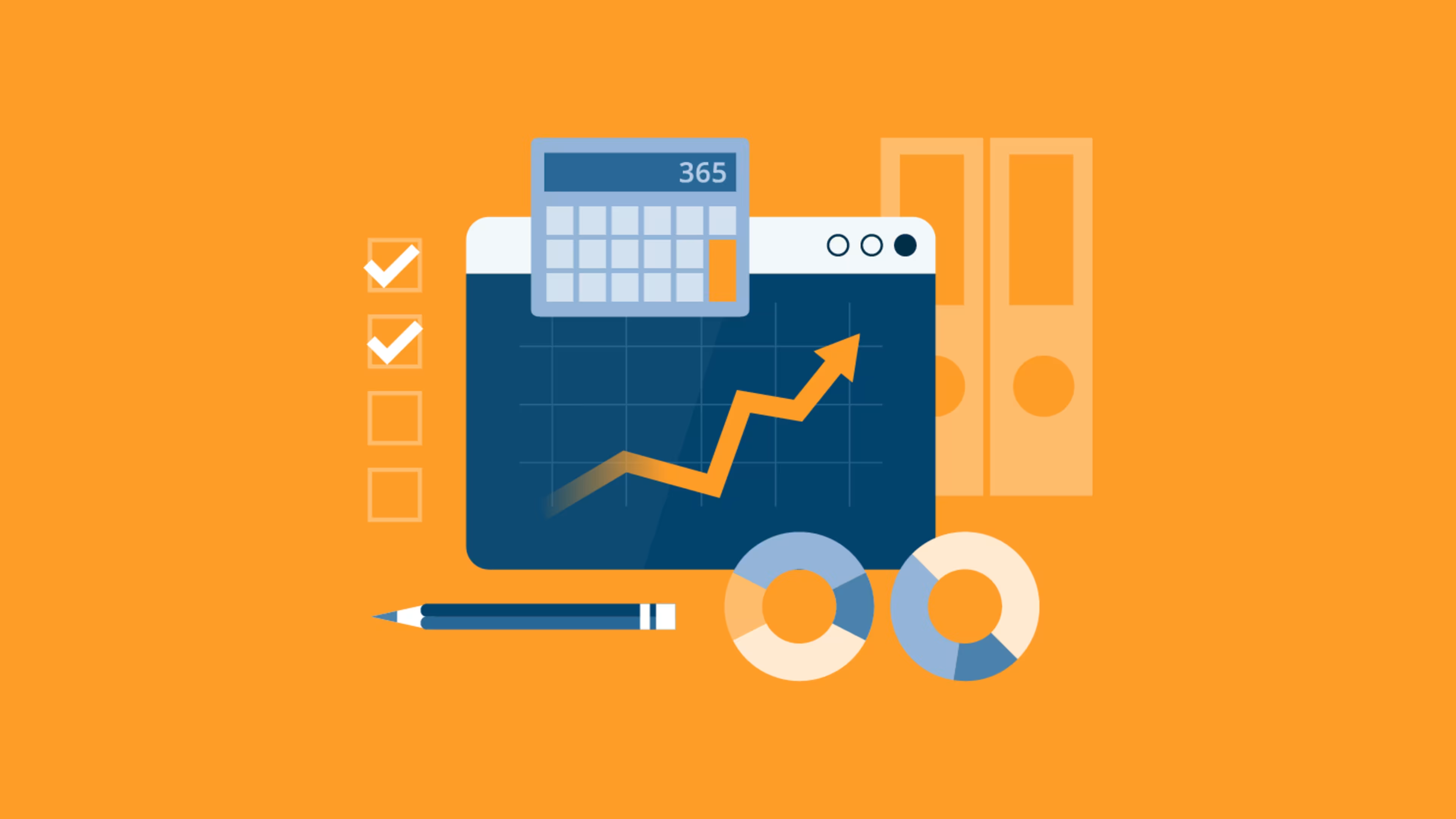Get a clear picture of the actual cost of production using cost accounting.
Are you a small or midsize business (SMB) owner struggling to understand the ins and outs of your business's profitability? There are many different types of accounting that can provide unique insights into your business, and one popular strategy is cost accounting.
Cost accounting is a common method SMB owners use to obtain a clearer picture of production. In this article, we'll explain exactly how cost accounting is used, the different costs factored in, and the advantages and disadvantages of cost accounting.
What is cost accounting?
Cost accounting is the process of assigning costs to goods that make up the business's products and services. Cost accounting outlines a helpful process and understanding of where a company spends the most money, how much things cost to produce, and if money is being misspent.
The goal of cost accounting is to get a clear picture of the actual cost of production. Costs are assigned to things like labor, materials, and overhead to optimize financial performance.
Types of costs
Fixed costs
Fixed costs are costs that do not change with an increase or decrease in business. These are sometimes called overhead costs, which tend to be the recurring expenses that it takes to keep the lights on. An example of a fixed cost would be rent; No matter how many sales occur, rent is always the same.
Variable costs
On the other hand, variable costs are costs that change from month to month. These directly correlate to business output. Examples of variable costs might be labor, raw materials, or sales commission. As business increases, these costs increase as well, and as business decreases, these will go down.
Operating costs
Operating costs are the simple, day-to-day costs of running a business. These are sometimes similar to fixed costs, which include rent or leases, office, supplies, bank fees, and utility costs. These are regular things that an organization uses constantly and needs to run the business.
Direct costs
Direct costs are specifically tied to the good or service. For example, raw materials and manufacturing supplies are directly tied to actual production. Another example is direct labor; you physically need line workers to assemble a product.
Indirect costs
On the opposite hand, indirect costs are business expenses that keep the lights on but do not correlate to the actual production of a product. Indirect costs might include supervisor salaries, insurance, legal charges, and more. All of these things help the business run, but they’re not directly tied to actual production.
These different types of costs are all important and give critical decision-making insight into the business. For example, planning for seasonal variable costs can help allocate cash. Maybe incredibly hot summer temperatures melt materials or increase the labor time because employees take more breaks. Cost accounting helps uncover these specific costs.
If you're trying to tighten up spending, analyzing unnecessary operating costs is helpful—even down to the granularity of office supplies.
Cost accounting methods
There are a few different ways companies can perform cost accounting to record both fixed and variable costs of production. All of these methods are useful in certain situations, depending on your goals as a business owner.
Standard cost accounting
Standard cost accounting looks at the actual manufacturing of goods and the costs of making the product. This works well in the manufacturing industry.
Lean accounting
Lean accounting focuses on efficiency and the time it takes to fulfill an order. Instead of focusing on actual production output, it defines costs along the individual product line. This type of cost accounting doesn't often allocate overhead costs as it focuses on what it takes to make a single product, not the costs of running the business day to day. It can be extremely helpful in optimizing costs across product lines.
Activity-based cost accounting
Activity-based cost accounting assigns cost to products. It breaks down the overhead costs and keeps costs within the ideal frame. It assigns overhead costs to products and services that actually use them, which is helpful when multiple products are in play. For example, a business producing skincare items might purchase the same materials for the production of several different products. Activity-based cost accounting would focus on activities versus a specific product line.
Life cycle accounting
Life cycle accounting takes into account all of the costs an asset will incur over its lifespan. This includes initial investments for research and development, recurring costs, and maintenance. For example, developing a new product line will incur upfront market and customer research costs, prototyping fees, and other research and development costs. Then, actual production will take place with new materials, and increased labor. Finally, bringing the new product to market will take up marketing and advertising budgets, increased retail space, new packaging costs, and more.
Marginal cost accounting
Marginal cost accounting is the cost to produce a single individual additional unit or serve a single additional customer. It's used to determine the optimal production output, ensuring that producing more doesn’t cost an unnecessary amount in increased warehouse space, materials, labor, and more. It helps optimize overhead costs and granularly understand the cost of increased profit and expansion.
Cost accounting vs. financial accounting
It's helpful to understand the advantages of cost accounting and why SMBs might choose it over other types of accounting. Standard financial accounting focuses on reporting overall business results and determines things like budgets and the overall financial position of the company. Cost accounting is a more granular framework that aims to optimize individual product lines, geographical regions, and departments.
The principles of cost accounting are simple. Different types of costs are analyzed, and once businesses have a clear view of exactly how much it costs to produce a given product, they can work on optimizing. For SMBs, every dollar matters, and inefficient production anywhere can cost significant money. It's not enough for small business owners to simply know the overall good or bad financial position; more often than not, cost accounting is incredibly effective in helping businesses save money.
Narrow your search for accounting firms with our list of companies in the following areas:
Advantages and disadvantages of cost accounting
Cost accounting is full of valuable insights that can help small business owners make better decisions and drive more profit. If you're a small business owner ready to tackle complex accounting, cost accounting might be one method you pursue for multiple reasons.
Advantages of cost accounting
1. Increases efficiency
Cost accounting helps streamline and optimize critical resources like money, time, and expenses when it comes to production. For example, business owners can establish baseline production metrics and ensure that each quarter doesn't exceed that spending, helping the business become more efficient. As the quarter progresses, business owners can check projections and actuals against this baseline to reduce overspending.
2. Increases actionability
Thanks to how detailed cost accounting can be, business owners can take swift action when it comes to their finances. Instead of staring at a spreadsheet full of numbers, business owners can clearly see opportunities for improvement. For example, perhaps one department has a glaringly excess amount of labor hours. This is unnecessarily costing the business money, and as a business owner, you can take steps to reduce labor in that department.
3. Helps determine profit
While growing business revenue is important, true success lies in profitability. Cost accounting helps increase profit margins by reducing unnecessary costs, and it helps quickly identify unprofitable activities. Cost accounting also helps business owners determine sale prices as they can clearly see the costs and consequent margins associated.
Disadvantages of cost accounting
While cost accounting can be extremely helpful, there are also some disadvantages that businesses should be aware of.
1. Costly to maintain
Cost accounting requires rigorous detail and upkeep. It's difficult to keep track of every individual cost in the business, and hiring an expert or outsourcing can be expensive.
2. Only assesses the past
Cost accounting is often simply a backward look at what already happened. While this is one piece of the financial puzzle, businesses might find it valuable to also focus on financial accounting, which looks towards the future and projections.
3. Duplicated work
Some financial experts believe that cost accounting can be a waste of time as it duplicates costs and measurements on other financial spreadsheets. It often takes multiple steps to verify the accuracy of data, and when costs change every year, it can be difficult to prioritize this work.
Explore cost accounting solutions
Cost accounting is highly valuable to your business with plenty of benefits, from a more granular understanding of costs to optimizing financial decision-making. If you are struggling to wade through complex accounting analysis, you are not alone. 44% of small businesses outsource accounting even if they have the bandwidth in-house.
Outsourcing accounting and finance allow small businesses to increase their bandwidth without adding to their full-time headcount and allows busy business owners to focus on revenue and growth. Accounting is incredibly time-intensive, and utilizing highly trained professionals who do this for a living is often extremely cost-effective.
If you're ready to granularly dive into your business' cost, explore a third-party accounting firm or brush up on hiring an expert in-house.
For small business owners short on time and already wearing a lot of hats, cost accounting is a time-intensive, technical process that is often best outsourced to experts.
For more information, take a look at these helpful related readings below:

